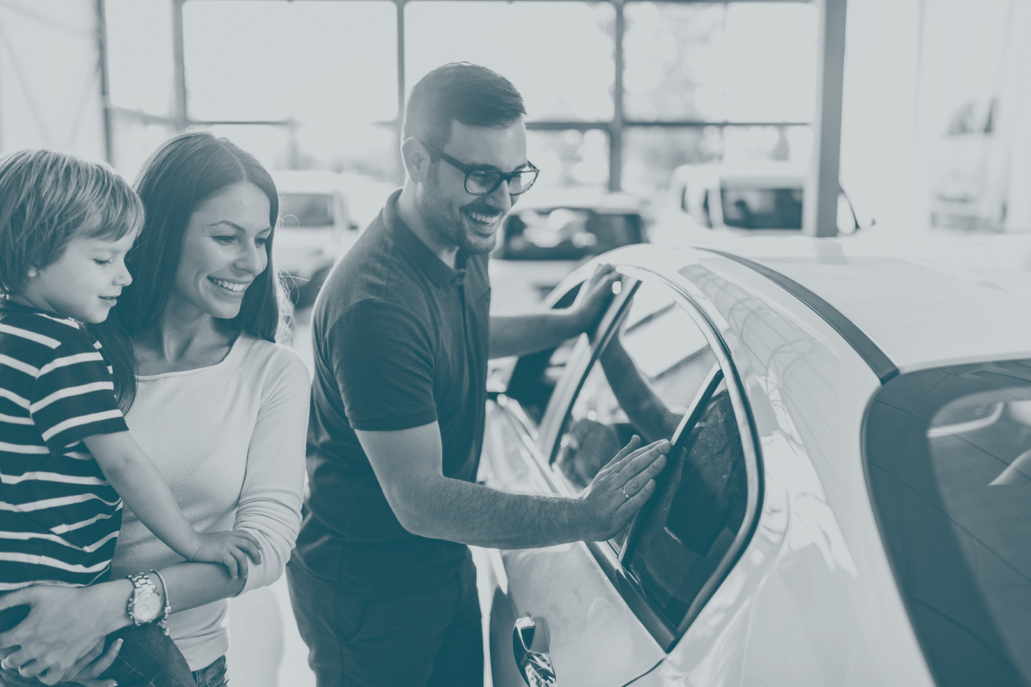The Evolution of the Automotive Customer Journey
Reputation Staff Writer

I’ve seen a lot of change in the last fifteen odd years that I have been working in the CX (customer experience) space, particularly in the automotive sector. I have been lucky enough to be involved with some of the world’s largest auto CX programmes – one was so big that it had more countries in it than attend the Olympics!
At one point, I was working for a company that (at the time) had feedback programmes for multiple OEMs that accounted for over 80% of new vehicles bought globally. Not all those customers were surveyed but a substantially robust sample was. I have seen the paper questionnaire superseded by phone calls (CATI), superseded by CAWI, email, SMS and multimode. As the world has changed, so has the methodology, but so have the customers, the digital space and, of course, the industry.
Times Are Changing
The industry itself is facing unparalleled challenges right now, partly because of the pandemic – major decrease in showroom footfall, less use of vehicles due to lockdown so less frequently needed service events, longer duration between vehicle changes, and so on – but also because of regulatory pressure around electric/hybrid and general sensitivity around environmental issues, amongst others. But, the good thing is that all of this should have given time for everyone in the industry to realise and understand that the customer journey has and continues to change dramatically. The automotive customer journey is evolving, so how do you stabilise, get fit and ready, and improve? Like any fitness programme, you need to assess shape, balance and power…
Since Lou Carbone, the man who coined the term “customer experience” in a 1994 article, “Engineering Customer Experiences,” and Whittle and Foster wrote “Customer Profiling: Getting into your Customer’s Shoes” back as far as 1989, the customer journey has more-or-less remained the same – bearing in mind that we’ve had customer journeys as long as we’ve had civilisation and trade, it’s just that we didn’t conceptualise it until fairly recently. The customer journey has predominantly been linear and binary. Through awareness, consideration, purchase, usage, and re-purchase you follow the single path and make a yes/no decision at each stage. If you say ‘yes’ at any stage then you progress, but if you say ‘no’ then you either go back to the previous stage to reconsider or you jump on to the beginning of another product or service’s path.
Related: Debunking the Myth of the Pushy Car Salesman
The New Shape of The Automotive Customer Journey
But I contend that the customer journey has now changed shape. It is now a twisted, convoluted, non-binary path where a customer can be at the point of purchase – literally sitting with a pen in hand ready to sign the PCP agreement when they get a marketing message from a competitor that gives them the information that they need in realtime – eg the rival brand showroom down the road – and suddenly they are at purchase stage on someone else’s customer path. No back step, no starting again, but straight to purchase. What this means is that we have to be aware of this new shape so that we are consistently vigilant along the entire path not just at historic points of susceptibility. Be prepared to act decisively, in real-time, where you didn’t think you’d have to previously. The shape of the customer journey has changed.
A decade ago there was an unbalanced communications fulcrum between the brand and the consumer. The brand controlled the communication and the consumer was largely the passive recipient. We all know that this has altered dramatically, the balance has shifted and consumers can now damage a brand irrevocably, sometimes literally overnight. They are no longer passive receptors but actively engage with brands and other consumers through technology. It’s also why there has been a dramatic increase in consumers finding brands on their terms through business listings such as Google or social media rather than going direct to a brand or business website.
Power To The Purchaser
Keynote speaker and digital pioneer Allister Frost summed it up far better than me back in 2010 when he said: “Technology has handed control over to the consumers of our brands. They are now part of the conversation and if they choose to speak to us we have to be prepared to speak back. Our days of purely shouting at them when we choose (advertising) are over. This is a box that, once opened, can never be closed… We ignore social media and the societal changes it will bring about at our peril.” So be prepared to engage in many conversations all along the journey because shouting no longer works. The balance has changed.
So where does the power come into it? If you overlay those two above thoughts about shape and balance then you logically get to today’s much sharper, consumer-centric world. Consumers have a proven “people like me” rationality (it’s why we shop in certain supermarkets for example) so they want to read like-minded reviewers and social comments. It’s not a surprise – back to the beginning of civilisation again – it’s because we are tribal.
As customer experience programmes have developed and matured – I am genuinely constantly surprised by what we can do with a click of a mouse now to say, generate a report, compared to the hours of programming and Excel shuffling that it took just ten years ago – so the importance of data, insights and actionability from survey data alone has diminished incredibly.
Related: Amazon, Apple and Google Battle for Your Car
Traditionally, you would have two points of survey for satisfaction: the sales event and the after-sales event. We know that, depending on what figures you read, that after-sales experience has about 5x the impact on re-purchase than the original sales event. No surprise really, in an average four and a half year tenure of a vehicle you are likely to have two or three services so simple maths says that it will have a greater impact. Very few OEMs conduct usage and attitude surveys post-sale (“Are you using this car for what you bought it for?” etc type pulse surveys) and even fewer run engagement surveys during the consideration phase.
But consumers review each and every stage constantly and publicly post about it. So if I want to test drive a vehicle at a particular dealership you can bet that I could find reviews from other “people like me” and in my tribe (brand > model > test driver> this location) and get non-brand controlled information. This information is not just useful, supplementary data for fellow consumers, it is also incredibly insightful for the brand itself but most OEMs and dealerships are simply not harvesting that right now. The power of satisfaction survey data alone to generate insights on your customers has diminished substantially because there is insightful data all along the new, twisted, convoluted journey being supplied by other consumers, and this data will soon greatly outweigh in volume, insight, sentiment, ratings and actionability the survey data alone. The power has changed.
Winning In The New Automotive Landscape
Brands that recognise the evolution of the automotive customer journey are the ones that will harvest information from reviews, social media and surveys in just one place to generate a more insightful voice of the customer – and engage in conversation with them throughout the entire journey from just this one platform. The brands that will flourish in this new world are the brands that understand that the customer journey has a different shape, balance and power…and equip themselves with the tools to capitalise.
Keep Reading: Why Auto Dealerships Need Apple Maps to Attract Customers










